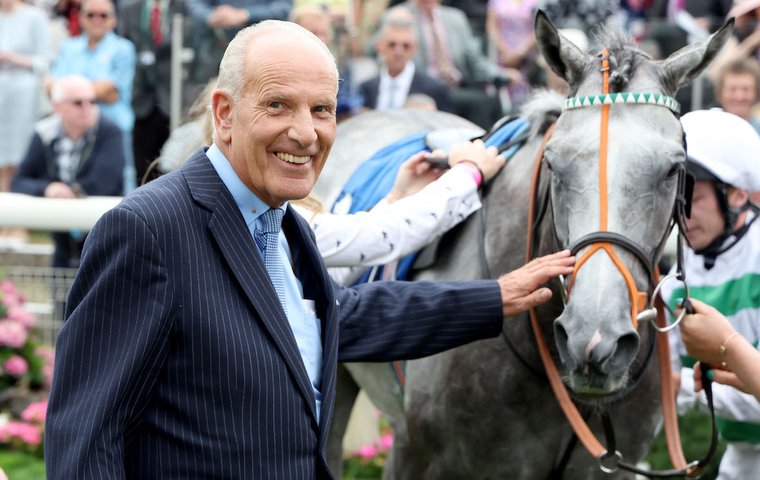
Unmissable interview with racing’s most renowned raconteur as he prepares for a visit to ParisLongchamp with his multiple G1-winning mare. Mind you, he’d rather win a British Classic, as Steve Dennis finds out
Did you hear the one about the two Englishmen in a car in Japan? No, it’s not a joke. Let Sir Mark Prescott, whose fund of tales and panache of delivery would give Scheherezade a run for her money, tell the story.
“I’d taken Alborada to the Japan Cup in 1999 but she went lame and we couldn’t run her,” he says. “So there we were in Tokyo, no plans. Then Julian Lloyd – he was one of [owner-breeder] Kirsten Rausing’s racing managers, and the most incredible ‘fixer’ – made one phone call and suddenly we were in a car with Eric Clapton on the way to his gig.”
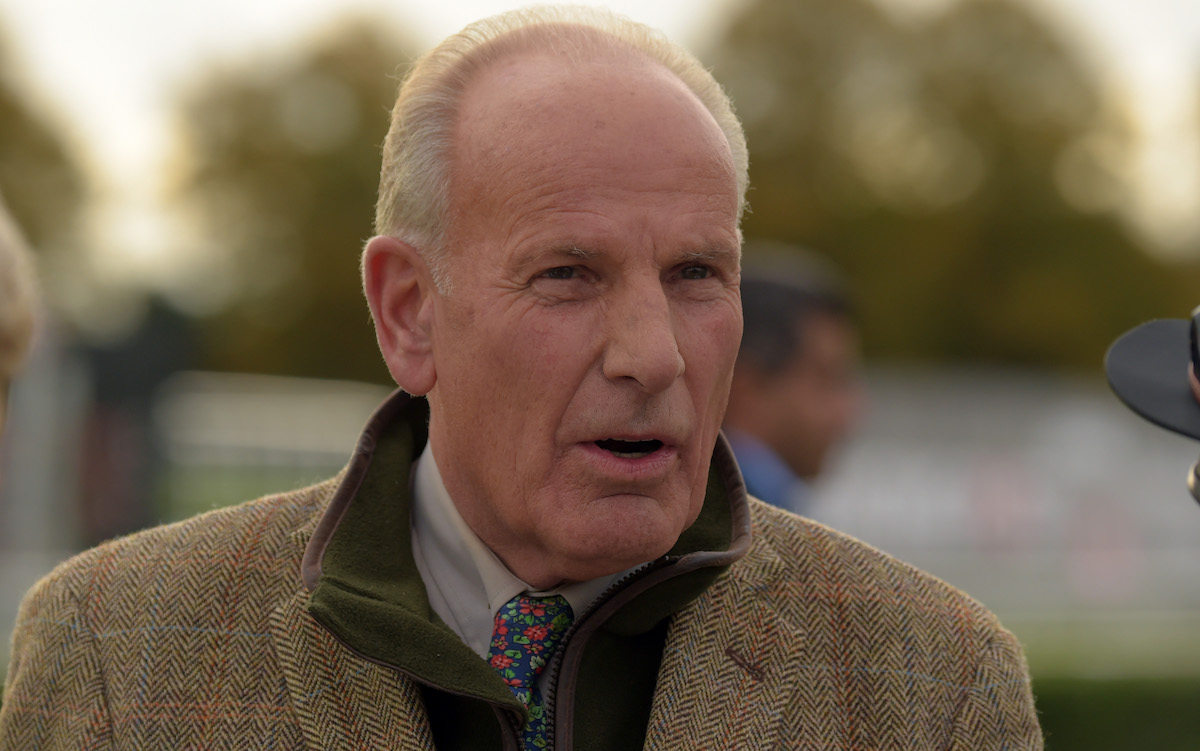 The revelation hangs in the air, Prescott nursing the punchline gleefully, the hack on the other end of the line stunned into silence. Those who know Prescott may have never before heard him use the words ‘Eric Clapton’ and ‘gig’ in the same sentence – it is a cast-iron guarantee that the third Baronet of Godmanchester was not the fellow responsible for the famous graffito ‘Clapton is God’ – but we are where we are, in the back of Clapton’s car, tooling through the neon-swirled Tokyo streets bound for the Budokan.
The revelation hangs in the air, Prescott nursing the punchline gleefully, the hack on the other end of the line stunned into silence. Those who know Prescott may have never before heard him use the words ‘Eric Clapton’ and ‘gig’ in the same sentence – it is a cast-iron guarantee that the third Baronet of Godmanchester was not the fellow responsible for the famous graffito ‘Clapton is God’ – but we are where we are, in the back of Clapton’s car, tooling through the neon-swirled Tokyo streets bound for the Budokan.
“I knew nothing about him,” adds Prescott, which seems totally unbelievable until you take into account the man telling the story. “But there I was, with his fans surrounding the car and me waving regally out at them. I was there when he did his sound test, I went backstage, the whole thing.
 “And then I remember phoning my secretary to tell her I wouldn’t be able to do the declarations at the usual time as I was living it up with Eric Clapton. She knew who he was, of course, and she was very impressed.”
“And then I remember phoning my secretary to tell her I wouldn’t be able to do the declarations at the usual time as I was living it up with Eric Clapton. She knew who he was, of course, and she was very impressed.”
Absorbing dusty cul-de-sac
That’s the thing with Sir Mark Prescott, 74, who was the youngest trainer in Newmarket when he took out a licence in 1970 and is now one of the oldest. You phone up to talk about a horse and are swiftly and willingly sidetracked into Eric Clapton, or the intense and tragic art of the bullfight, or some absorbing dusty cul-de-sac of racing history. Yet duty drags us back to the case in point.
Prescott is renowned in Britain for winning more than 2,000 races with what might be kindly termed the less able members of the breed. He may not know much about ‘Slowhand’ but he knows all about slow horses, and despite only having 50 boxes at his historic Heath House yard, at the foot of Warren Hill, he performs annual wonders with their occupants.
Of course there have been very good ones along the way, among them the remarkable Spindrifter, who won 13 races as a two-year-old, champion sprinter Pivotal, Prix de Diane heroine Confidential Lady, multiple G1-winning sisters Alborada and Albanova, and a host of sleight-of-hand major handicap winners.
But after all these years Prescott may have one better than all of them in the shape of Alpinista, a leading contender for the Prix de l’Arc de Triomphe, a grey daughter of Frankel whose grand-dam – through the amazingly successful web of bloodlines cultivated and curated by Rausing – is the aforementioned Albanova.
Alpinista is on a rolling boil of five successive G1 victories over a mile and a half, including the Grand Prix de Saint-Cloud and Yorkshire Oaks this summer, and has thrust her trainer into an unfamiliar but not unwelcome spotlight. Talking about Alpinista begins, naturally, with talking about something else.
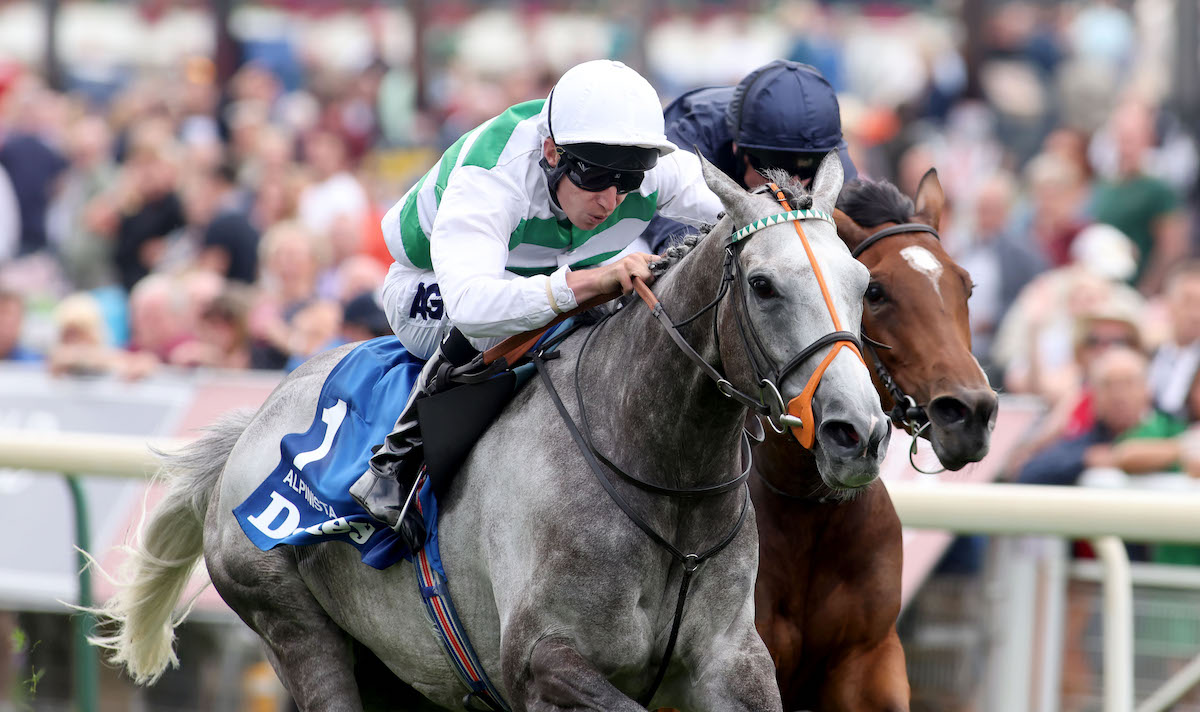
“This has been the plan,” he says, shrugging off conversational forays about pressure, nerves, and the autumnal obsession with the state of the ground at Longchamp. “Do you remember – you’re probably not old enough – that marvellous line of Bernard van Cutsem’s after his horse won at Royal Ascot? Someone asked him what the plan for the horse was, and he fixed his interrogator with a steely glare and said ‘That was the plan’. Wonderful.
“Last August she beat the future Arc winner in Germany and then won another Group 1 the week before the Arc, so perhaps I should have trained her for the Arc last year. But that’s very easy to say now.
Always anoher rabbit hole
“She’s stoutly bred, has tons of pace, is very straightforward and well behaved at home, and as long as the ground is not very deep – she’s won on soft, but not heavy – she’ll run well.”
And then we shift slightly sideways, as ever, like a terrier picking up the scent, always another rabbit hole to go down.
“I’ll have to go to Longchamp, Miss Rausing is insistent,” he says, a man of the wide world but a reluctant tourist. “But of course it’s sales week, and it’s a bit of a waste of time when one could be training horses. This job is about trying to use time as efficiently as possible.
“And, as you ask, there will be a few nerves,” he goes on. “I’m always nervous when any of my horses runs, whether it’s a Group 1 or a 0-60 handicap. I always hope that the horse will run just a little bit better this time than the last time. It’s like being a schoolmaster.”
This is a point to which Prescott returns again and again, seeing the trainer’s role in these specific terms. He would have made a good schoolmaster – very firm, scrupulously fair, occasionally terrifying, endlessly interesting, the type of schoolmaster one recalls affectionately from the safe haven of later life, albeit with a frisson of terror mixed in.
“I get enormous satisfaction, like all schoolmasters, from two things,” he explains, “maximising the potential of the individual, and ensuring they have a bright future.
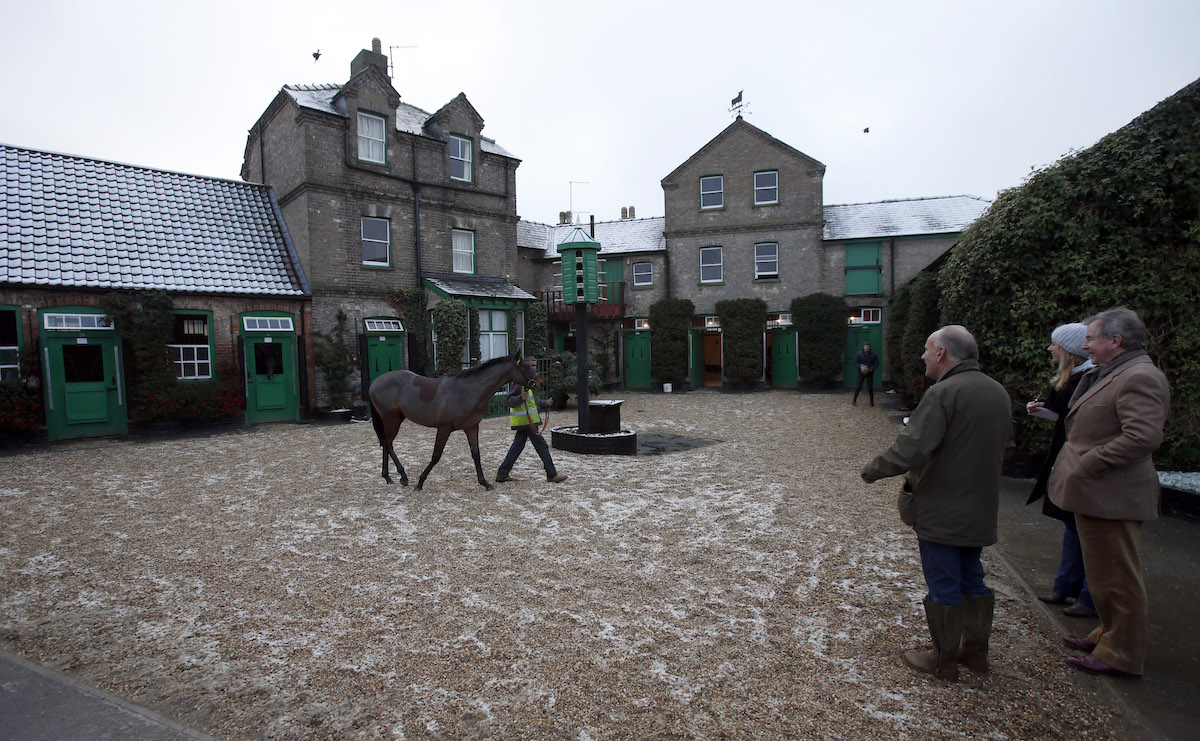
“As a trainer, I suppose I’m the headmaster. The owner is the parent, the horse is the child, and the racecourse is the examination hall. In this job it never gets boring, every day, every year is stimulating, new parents, new children, different exams.”
He pauses, shifts sideways, another rabbit-hole to explore. And another. Run, rabbit, run.
“Go on, then. Who was the last five-year-old mare to win the Prix de l’Arc de Triomphe? Nearly all the best ones have been retired by that age.
“Training a good filly, a good mare is in one way a bit easier than training a good colt. Defeat doesn’t reduce their value at stud. Fillies are judged on their big wins, whereas a colt is often judged on his big-race defeats. It doesn’t seem fair, but there it is.
‘There’s still time to win one'
“The Arc is one of the greatest races in the world, perhaps even the most important. It would be wonderful to win it, but as everyone knows, I’ve never won a British Classic. Won one in France, but never in Britain. I do think I’d put winning a British Classic above winning an Arc, because of the long, long history of those races. You need to like racing history to want that, and I do like it. There’s still time to win one, I suppose.”
It’s almost a rheumy-eyed reverie, but Prescott has a mind like a shiv. He hasn’t forgotten.
“The last five-year-old mare to win the Arc? Park Top nearly did it, didn’t she, but not quite. I’ll have to tell you. Corrida, in 1937.”
A very apt name for a conversation with Sir Mark Prescott. Corrida will take us down yet another road, one much less travelled in the company of racehorse trainers.
Anything but conventional
Sir Mark Prescott, as a reader may have gathered, tends to the eccentric end of the spectrum. Not mad-scientist eccentric, not crazy-cat-lady eccentric, but intriguingly, demandingly, refreshingly eccentric.
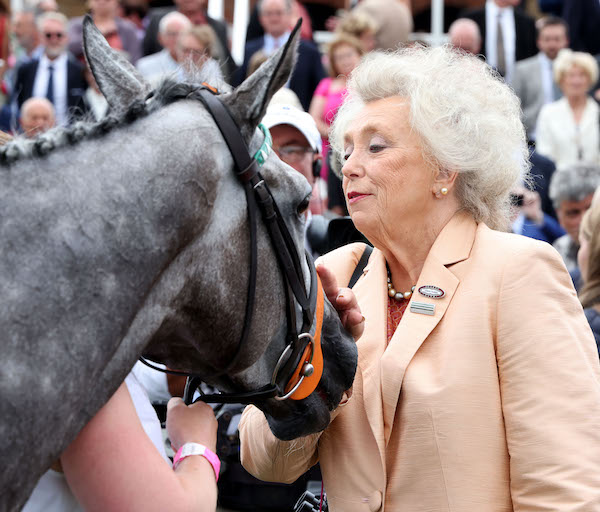 From outward appearance he would fit the American expectation of an English gentleman, always well groomed, always well spoken, a demon for punctuality, a Wodehousian minor aristocrat from his Windsor knot to the parade-ground sheen on his brogues. Inwardly, though, the teetotal Prescott – who went flat cold turkey when abandoning his prodigious appetite for cigars – is anything but conventional.
From outward appearance he would fit the American expectation of an English gentleman, always well groomed, always well spoken, a demon for punctuality, a Wodehousian minor aristocrat from his Windsor knot to the parade-ground sheen on his brogues. Inwardly, though, the teetotal Prescott – who went flat cold turkey when abandoning his prodigious appetite for cigars – is anything but conventional.
He has a penchant for the macabre, ably illustrated by the three vast glass cases containing the flayed hides of celebrated 19th century horses that hang in his stable yard, 1888 Derby winner Ayrshire, 1889 Derby winner Donovan, and the outstanding unbeaten champion and influential sire St Simon, winner of the 1884 Gold Cup at Royal Ascot.
St Simon’s hide was given to Prescott by Lady Anne Bentinck, grand-daughter of the colt’s owner the Duke of Portland, and came with the benediction ‘they are disgusting, and I’m surprised that someone like Sir Mark Prescott should be delighted with them. Still, each to their own’.
Incidentally, St Simon’s skeleton is preserved in the National History Museum and two of his feet can be found in the Jockey Club Rooms in Newmarket. With a little diligence, he could be rebuilt …
‘I turned away 60 yearlings’
‘Each to their own’ is the perfect summation of Prescott, whose individuality has held him back even as it drives him forward. Once upon a time he turned down the offer of some choicely-bred yearlings from Sheikh Mohammed, citing the fact that his 50 boxes were full and he didn’t want to build any more.
“One year, I remember, I turned away 60 yearlings,” he notes, unrepentant of the scorned opportunity, content with his choice.
Some trainers will tell you they live and breathe their horses, but Prescott exists on more cosmopolitan air, although he evidently has a blind spot when it comes to legendary rock gods. Back we come to the long-ago Corrida, whose name is Spanish for bullfight; Prescott is an aficionado of the bullring, will wax lyrical about El Cordobes, Belmonte and Manolete, appreciates that many view it as a barbarous game but regards it nevertheless as high art.
“It is life and death – and there’s really nothing else, is there,” he says. “The bull has no chance, the bull is going to die, but it has lived marvellously for four and a half years and I have no difficulty with the concept.
“The average layman who might go to the corrida needs to understand the rules, which are complex and rigorously enforced. The matador must do his job as deliberately, as slowly, as dangerously, as skilfully, as beautifully as he can, and I have a great respect for both bull and man.
“At bullfights in Spain women and children come to see this artistry play out – no other art form brings together life and death in this way. Whether it is right or wrong is quite another thing, but no-one can deny its complexity, its relationship with tragedy.
‘Lost from modern society’
“Any sport that involves animals has this complexity. It’s the same with horse racing. Many people think that because they understand their pets they can talk about other animals in the same breath, but most people these days have no idea about the working animal, it’s something that has been lost from modern society.”
Prescott speaks with the knowledge gleaned from a lifetime among working horses, from the age of 14 and his first weekends with west-country trainer Sid Kernick, “probably the best horseman I’ve ever met”, to success as an amateur steeplechase jockey, to his apprenticeship with Newmarket trainer Jack Waugh, a resolutely old-school character whose retirement paved the way for Prescott to take over at Heath House. He has been there ever since, and nowadays one of the questions he regularly fends off is the one about retirement.
His assistant William Butler has endured a Prince Charles-esque wait as heir to the throne – 23 years and counting, the last of a long line of assistants that includes William Haggas, Simon Crisford and Pascal Bary – and it does seem a little peculiar that the educated, erudite Prescott has not yet unglued his nose from the grindstone and his feet from the treadmill and gone off to pursue a late-life Grand Tour, full of galleries, bullfights, contemplative moments and exotic thrills.
Yet to do that would be to leave part of himself behind, a part that informs all the rest. Wherever you go, whatever you do, you cannot escape yourself; the old schoolmaster clears his throat and waits for a respectful silence. Hello, Mr Chips.
“Well, you can’t do everything, and I still find what I do to be all-consuming, endlessly fascinating,” he says. “Because you never know, in the class of 2022 there could be that one horse who might be very, very good. If not, maybe in the class of 2023. It’s the headmaster in me.
“Okay, the likes of Alpinista have towed me along, but most of the other 2,000-odd winners I’ve trained have needed me badly, and their owners have needed me to help their horses along. I’ve given them a winner, I’ve made it fun.
“Every Sunday I sit down and phone every one of my owners, all 59 of them, to tell them how their horse is, inform them of plans. I find the mental aspect of the job incredibly absorbing, it never gets boring, there’s something to stimulate me every day. I’ll try to eke it out a little longer.
“I keep myself at full stretch; the only problem I have is lack of time. I suppose you’d call it a labour of love.”
Old romantic
Still in love after 52 years; Prescott the old romantic. Typically, he regards his two greatest achievements as taking place away from his yard, Prescott as nurturer rather than trainer, rescuing things that might otherwise have been lost.
“I was in charge of the Heath Committee for 46 years,” he says. “The most important thing about Newmarket is the Heath – the railway and motorway were built around it, it’s never seen a plough – and there are 81 trainers, 2,500 horses and a multitude of stud farms who rely on it. Maintaining it, intact, is something I’ve been very proud to be part of.
“Then, second to that, is the rescuing of the Waterloo Cup [a hare-coursing event] in 1972, keeping it going until it was made illegal in 2005. Preserving things so that other people can enjoy them is, to me, very rewarding.”
Perhaps, on the time-honoured first Sunday in October, Alpinista can provide Prescott with a reward more temporal than spiritual, the biggest victory of his life. And lest we forget, Eric Clapton is a racing man, or at least he was once, with talented horses such as The Ripleyite and Via Delta running in his green-and-yellow striped silks.
Wouldn’t it be something if Clapton were to put down his guitar that night and turn on his laptop to find that the chap who once shared his car – no, Layla, I knew nothing about him, he managed to blag his way backstage too – had trained the winner of the Prix de l’Arc de Triomphe.
He’d probably tell his secretary; she’d be very impressed. As would we all.
• Visit Sir Mark Prescott's stable website
‘If you don’t try, you’ll never win’ – Rene Piechulek eyes another Arc shock with Mendocino
Breeders’ Cup Challenge: Flying Honours bids to follow in Frankel’s footsteps
Rockfel Stakes offers clues for Classics and Breeders’ Cup
Seven Days In Racing: Vadeni, Freddy Head, Jamie Kah and Churchill Downs
Teenage sensation: introducing Seina Imamura, the girl who is taking Japanese racing by storm
View the latest TRC Global Rankings for horses / jockeys / trainers / sires


